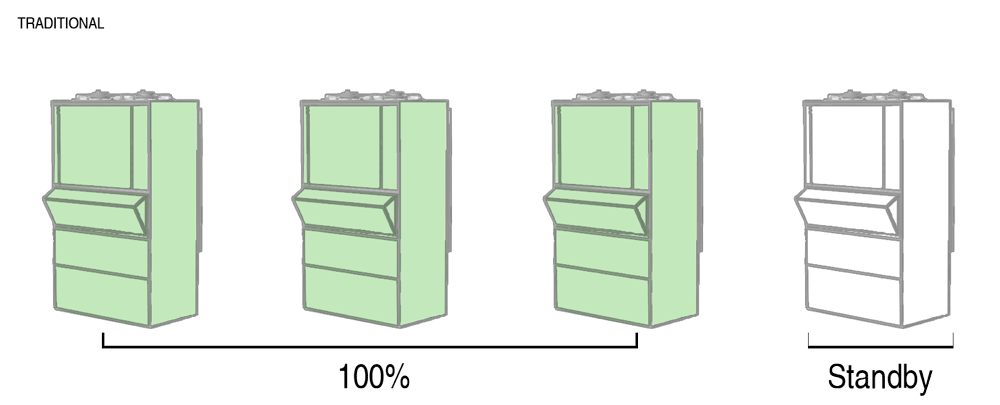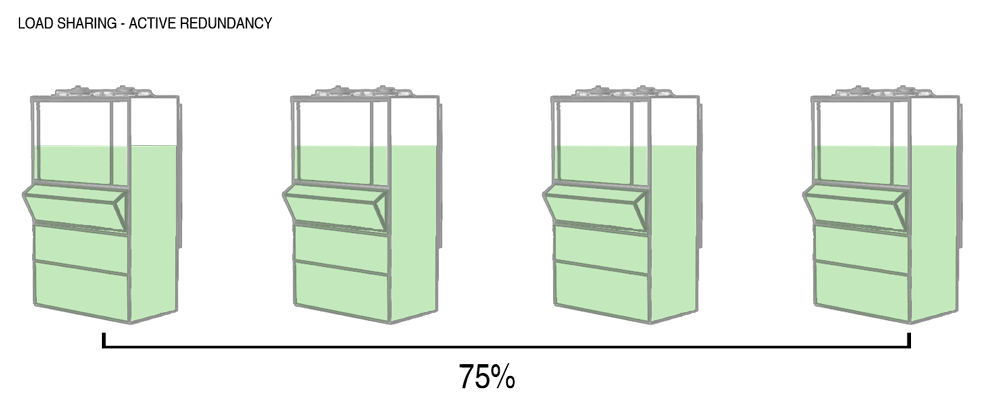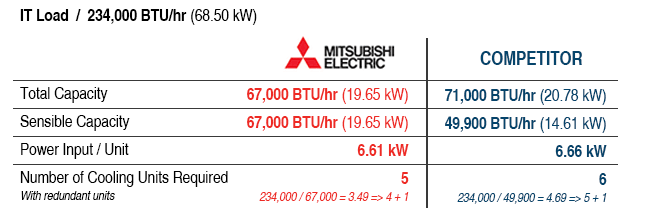BLOG
BLOG
The Benefits of Inverter Cooling Technology for Modular Facilities
UPDATED SEPTEMBER 19, 2023
 |
by Andrea De Zuani, Senior Manager IT Cooling |
We talked last time about lowering Power Usage Effectiveness (PUE) by using a purpose-built cooling solution for your modular facility.
When we compared the on/off compressor* version of our DX-P units (specifically designed for IT Cooling applications), against a competing product, the PUE was significantly lower, emphasizing the efficiency gains when you deploy an IT Cooling solutions vs. a comfort cooling product.
What if we said we could improve that PUE even further? Our DX-P cooling units can also be built with an inverter-driven compressor.
So, what does that mean, and what are the benefits?
A variable speed compressor allows our wall-mounted units to modulate the capacity to the load demand. There are many benefits of implementing this design philosophy:
Redundancy Strategy
First, let's talk quickly about the redundancy strategy. It is important to understand what the cooling strategy looks like so all the benefits can be realized.
Like most mission critical systems, there will be some redundancy built into the system. Most commonly, N+1, which means if your system requires N number of cooling units to manage the heat load, you will have +1 extra as a backup.
This reserve unit typically is in standby, waiting to either turn on because of a fault condition or to cycle the runtime between units to get equal runtime on the compressors. We will call this a Traditional system.

When you have a cooling system that uses modulated capacity, the same principle of having an extra reserve unit applies. The difference is that the unit is not in standby. All units in the system run at a reduced capacity and share the load.
This strategy is called Active Redundancy. If one unit experiences a fault, or needs to be shut off for maintenance, the remaining N units can still meet the load requirements.

This also plays into one of the points above: airflow performance.
Airflow Performance
In the Traditional system, the running hours of the standby unit are balanced by turning on the standby unit and shutting off another. When this happens, the airflow of the modular building changes.
As shown in the image below, the left-hand unit is off, creating an imbalance in airflow and temperature. Careful consideration will be needed on how the whole system reacts when the standby unit changes.

Deploying our DX-P with the inverter compressor, the heat load is shared across all units. The airflow in the building will be uniform, delivering the most optimal cooling.

But, with four units running all the time, you would expect the energy consumption to be higher, right? Not so fast...
Energy Consumption
For energy consumption, we will look at our previous post's example comparing our on/off DX-P vs. our competitor's product. However, this time around, we will evaluate using our inverter DX-P and adding an additional unit for redundancy.

We need to pause right here to take into consideration the advantages of the inverter compressor. Before, we evaluated the total power input of all the cooling units. But, since we can modulate the capacity, the energy consumption of Mitsubishi’s units are reduced.
We take the total IT load of 234,000 BTU/hr and divide by the total number of units required: 234,000 / 5 = > 46,800.
This value represents what the modulated capacity is across our 5 units. At approximately 69.9% capacity across our unit, our power input per unit is 3.90kW. Therefore:

Taking a look at the new Operating Cost:

*Power Input x 8,760 hours/year x number of units = kWh/y
**kWh/y x electricity cost
With the ever-increasing cost in power and the push for sustainability, the overall impact of PUE across your fleet of equipment cannot be ignored. When you are working on your next modular building, reach out to us and let us know how we can support your design.
*on/off compressor will provide 100% of the rated cooling capacity or none.
Edited by Nicole Kristof, Digital Marketing Specialist
Stay up-to-date on industry trends & insights
Be the first notified of new blog posts
By submitting this contact form, you agree that a representative(s) of Mitsubishi Electric Power Products, Inc. (MEPPI) may contact you using the information you provided. In accordance with our Privacy Policy, we will never share or sell your personal data.